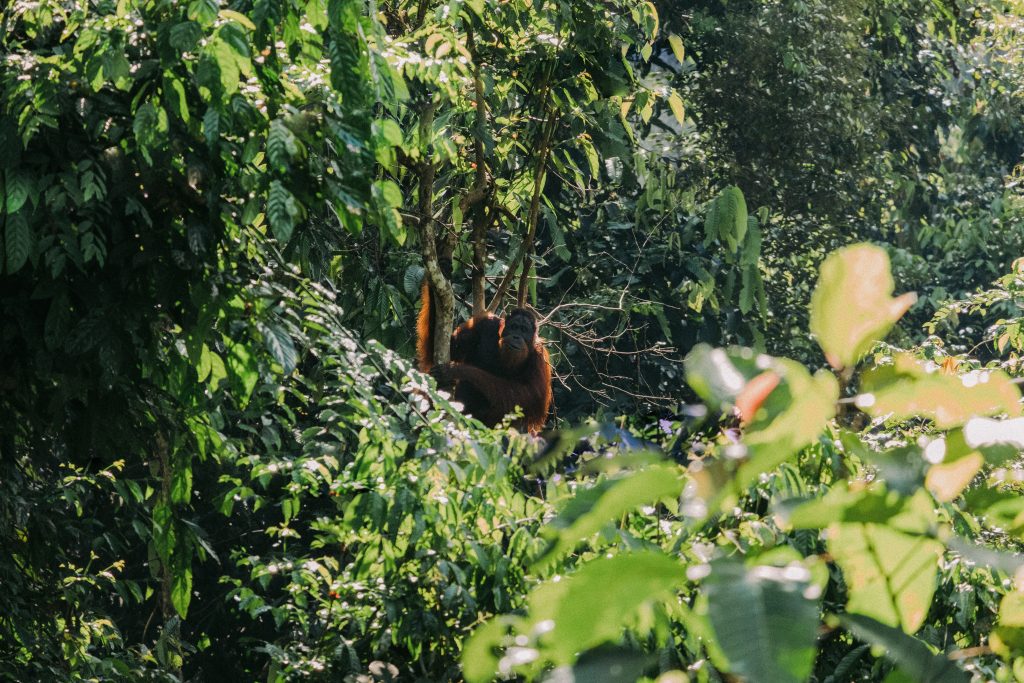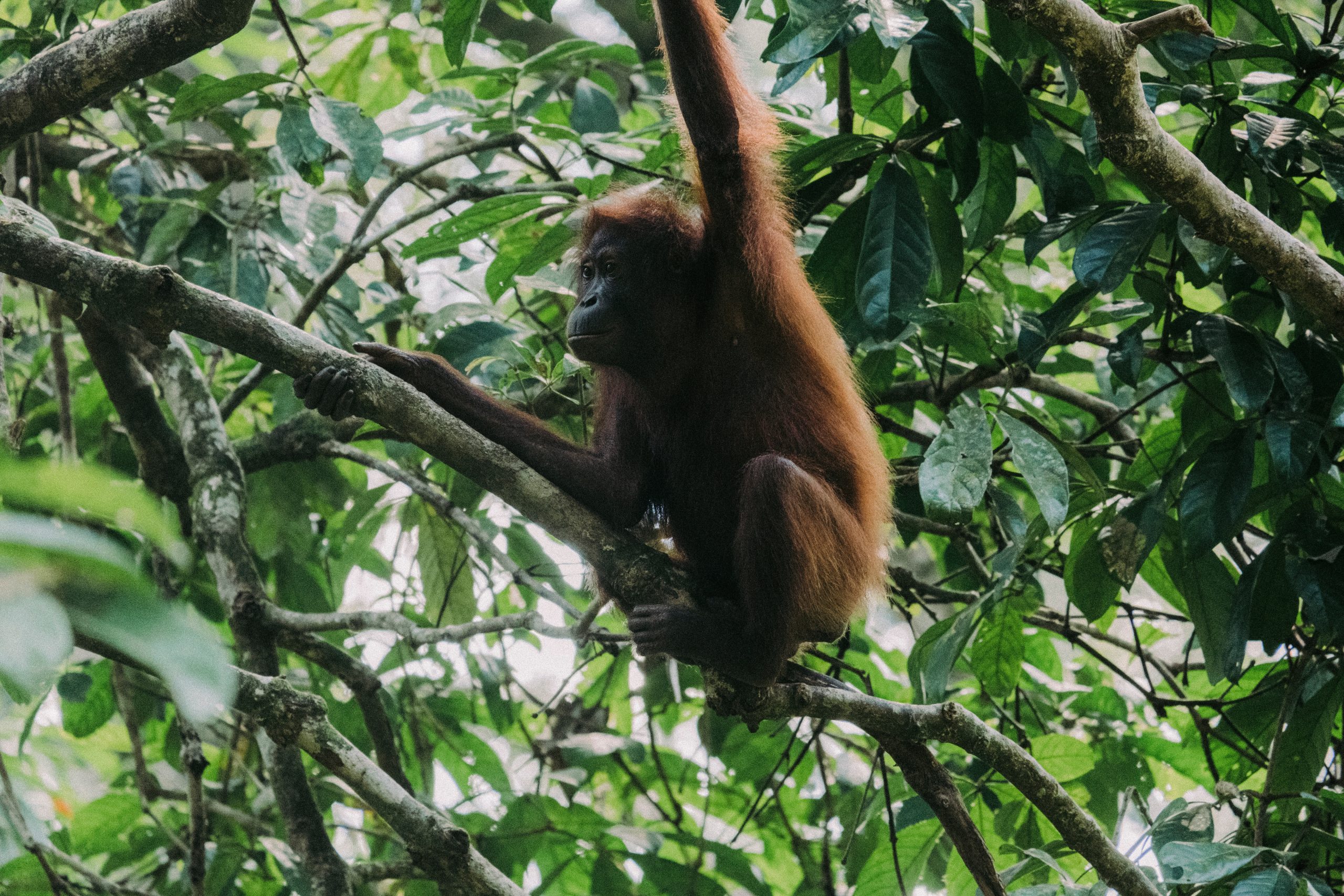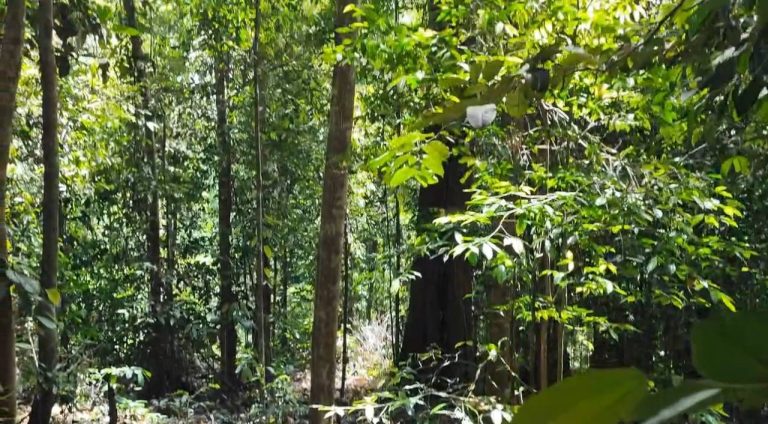In the biodiverse rainforests of Sabah, a captivating symbiotic bond unfolds between the majestic Ficus trees and the enchanting orangutans. These remarkable entities, seemingly unrelated, are intricately intertwined, showcasing the wonders of nature. Within the enchanting realm of Sabah, we delve into the captivating world of Ficus trees and orangutans, unraveling their interdependence, the pivotal roles they assume in one another’s existence, and the profound significance of this extraordinary symbiotic relationship.
Understanding Ficus Trees
Ficus trees, also known as fig trees, are a diverse group of plants belonging to the Moraceae family. They are renowned for their ability to thrive in tropical climates and can be found in various parts of the world. These majestic trees exhibit unique characteristics that set them apart from other tree species.
Ficus trees have a distinctive growth habit, with some species growing as large, spreading trees while others are smaller and more shrub-like. They typically have a dense canopy of glossy leaves that provide shade and shelter to the surrounding ecosystem. The leaves are often dark green and leathery, which helps the trees withstand the high temperatures and humidity of their native habitats.
One notable feature of Ficus trees is their aerial roots. These roots grow from the branches or trunk of the tree and reach down towards the ground, giving the tree a captivating and intricate appearance. These roots serve multiple purposes, including providing additional support to the tree and absorbing nutrients from the air.
Ficus trees also bear unique fruits called figs. Figs are not actually fruits in the traditional sense but rather a specialized structure known as a syconium. The syconium contains many small flowers on the inside, and the figs are pollinated by specific wasp species that enter the syconium to lay their eggs. This pollination process is essential for the development of the figs.
Orangutans, the largest arboreal mammals on Earth, have a close relationship with certain species of Ficus trees. While orangutans are known to interact with various Ficus species, some are particularly suitable for their dietary and ecological needs.
One such species is the Bornean strangler fig (Ficus microcarpa). These fig trees have a unique growth habit where they start as epiphytes, germinating on the branches of other trees. Over time, their roots grow downwards, enveloping the host tree and eventually strangling it. This process gives the tree its name and creates hollow spaces within the trunk, which orangutans often use as shelters and nests.
The Bornean strangler fig produces abundant figs that are an important food source for orangutans. The figs are rich in nutrients and provide a concentrated energy source for these primates. Orangutans play a crucial role in the dispersal of the Bornean strangler fig’s seeds. As they consume the figs, they travel through the forest, dispersing the seeds in their droppings. This process contributes to the regeneration and distribution of the fig trees.
Another species of Ficus that is suitable for orangutans is the white fig (Ficus virens). These trees also produce figs that orangutans find appealing. The white figs are larger in size compared to other fig species, and their fruits are an important food source during certain seasons when other resources may be scarce.
Orangutans exhibit selective foraging behavior, preferring certain Ficus species over others. Their feeding habits influence the distribution and abundance of different Ficus tree species within their habitat. By consuming fruits from specific Ficus trees, orangutans contribute to the genetic diversity and evolution of these tree populations.
The Life of an Orangutan
Orangutans, the remarkable great apes of Southeast Asia, have a captivating life filled with unique behaviors and adaptations. In the state of Sabah, located on the island of Borneo, a significant population of orangutans thrives in the lush rainforests. Let’s explore the life of these Sabah orangutans in more detail.
Habitat and Distribution
Sabah’s orangutans primarily inhabit the lowland rainforests and swamp forests of the region. These forests provide the ideal environment for orangutans, offering abundant food sources and ample tree cover for their arboreal lifestyle. While their distribution is mainly concentrated in Sabah’s protected areas, such as the Sungai Pin Conservation Area, the Danum Valley Conservation Area and the Kinabatangan Wildlife Sanctuary, they can also be found in other forested regions throughout the state.
Physical Characteristics
Orangutans have a distinctive appearance that sets them apart from other primates. They are covered in long, shaggy reddish-brown fur, which serves as protection against the tropical elements. Adult male orangutans are much larger than females, reaching impressive sizes of up to 200 pounds (90 kilograms) and standing over 5 feet (1.5 meters) tall. Their arms are longer than their legs, which aids in their exceptional tree-climbing abilities.
Arboreal Lifestyle
Orangutans are arboreal creatures, spending the majority of their lives in the trees. Their bodies are perfectly adapted for an arboreal lifestyle, with long arms and grasping hands and feet. They move through the forest canopy by swinging from branch to branch, using a form of locomotion known as “brachiation.” This method of movement allows them to navigate the treetops with ease and agility.
Feeding Habits
Orangutans are primarily frugivorous, meaning they primarily feed on fruits. In Sabah, their diet consists of a wide variety of fruits found in the rainforest, including figs, durians, and various other tropical fruits. They also consume leaves, young shoots, bark, and occasionally insects. Orangutans have a slow metabolic rate, which allows them to sustain themselves on a diet that may not be as energy-dense as that of other primates.
Nesting and Social Structure
Orangutans are solitary animals, with adult males and females leading mostly independent lives. They build nests high up in the trees to sleep and rest. These nests are constructed from branches and leaves, and orangutans often build a new nest each night. The building and use of nests serve as a way for orangutans to maintain personal space and avoid unnecessary social interactions.
Intelligence and Tool Use
Orangutans are highly intelligent creatures, capable of using tools to aid in their daily activities. They have been observed using sticks to extract insects from tree crevices and using leaves as makeshift umbrellas during rainfall. These tool-use behaviors showcase their problem-solving abilities and adaptability in their forested habitat.

The Symbiotic Bond
The relationship between Ficus trees and orangutans exemplifies a remarkable symbiotic bond, where both species rely on each other for mutual benefits. This interdependence highlights the intricate web of connections within ecosystems and underscores the importance of biodiversity.
Orangutans’ Nutritional Needs
Orangutans, as frugivorous animals, rely on a diet rich in fruits to meet their nutritional requirements. Ficus trees play a vital role in fulfilling these needs. The figs produced by Ficus trees serve as a concentrated source of nutrients for the orangutans. These fruits are high in energy, vitamins, and minerals, providing orangutans with essential sustenance.
Seed Dispersal
Orangutans play a crucial role in the dispersal of Ficus seeds. As they consume the ripe figs, they inadvertently aid in the distribution of the seeds. After ingesting the fruits, orangutans move through the forest, traveling considerable distances. During their journey, they defecate, depositing the undigested seeds in their droppings. These droppings serve as natural fertilizer and provide an ideal environment for seed germination.
The Ficus Fruit Feast
When Ficus trees bear fruits, they offer a bountiful feast for orangutans. Ficus fruits are rich in nutrients and provide a vital food source for these primates. Orangutans are attracted to the figs’ taste and nutritional content, making them an integral part of their diet. This consumption of Ficus fruits directly supports the survival and well-being of orangutans.
Seed Germination and Tree Reproduction
The symbiotic relationship extends beyond seed dispersal. Orangutans aid in the reproduction of Ficus trees by facilitating seed germination. The seeds that pass through their digestive systems are often primed for germination, benefiting from the process of scarification. As the orangutans move through the forest, dispersing the seeds, new Ficus trees can take root and flourish, contributing to the expansion and diversity of Ficus populations.
Ecosystem Resilience
The mutual benefits shared between Ficus trees and orangutans have broader implications for the surrounding ecosystem. As orangutans disperse Ficus seeds, they contribute to the diversity and regeneration of the forest. This, in turn, supports the overall health and resilience of the ecosystem by promoting the growth of different tree species and maintaining a balanced community of flora and fauna.
The Role of Orangutans in Ficus Tree Reproduction
Orangutans play a crucial role in the reproduction of Ficus trees, extending their influence beyond seed dispersal. Through their foraging habits and selective feeding behaviors, orangutans contribute to the genetic diversity and distribution of Ficus tree populations.
Selective Foraging Behavior
Orangutans exhibit selective foraging behavior, often preferring certain species of Ficus trees over others. This preference can be influenced by factors such as fruit availability, nutritional content, and taste. By selectively consuming fruits from specific Ficus tree species, orangutans contribute to the distribution and abundance of those particular trees within their habitat.
Ideal Conditions for Germination
Orangutans create favorable conditions for Ficus seed germination through their dispersal activities. The droppings serve as natural fertilizer, providing essential nutrients for the seeds to sprout and grow. Additionally, the droppings may be deposited in locations that are suitable for seedling establishment, such as nutrient-rich soil or gaps in the forest canopy. These ideal conditions increase the chances of successful germination and establishment of new Ficus trees.
Genetic Diversity and Evolution
Orangutans’ selective feeding behavior and seed dispersal contribute to the genetic diversity and evolution of Ficus tree populations. By favoring certain Ficus species and selectively consuming their fruits, orangutans influence the distribution and abundance of different Ficus tree genotypes within their habitat. This genetic diversity is essential for the long-term health and adaptation of Ficus populations to changing environmental conditions.
Long-Distance Dispersal
Orangutans, with their wide-ranging movements through the forest, contribute to the long-distance dispersal of Ficus seeds. As they disperse seeds in their droppings, they can transport them over considerable distances from the parent tree. This long-distance dispersal helps to establish new Ficus trees in areas that may be beyond the reach of other seed dispersal agents, promoting genetic exchange and expanding the species’ range.
Facilitating Succession and Forest Regeneration
Orangutans’ role in Ficus tree reproduction contributes to forest succession and regeneration. As new Ficus trees germinate and grow, they help restore and maintain forest ecosystems. The presence of mature Ficus trees provides valuable resources and microhabitats for other species, supporting the overall biodiversity and functioning of the forest.
The Future of Ficus Trees and Orangutans
The future of Ficus trees and orangutans holds both challenges and opportunities. As these species face ongoing threats and conservation concerns, it is crucial to consider the actions needed to secure their survival and the continuation of their symbiotic relationship.
Habitat Conservation and Restoration
The future of Ficus trees and orangutans relies heavily on habitat conservation and restoration efforts. Protecting existing forested areas and establishing new protected areas will be essential for safeguarding their habitats from deforestation, habitat loss, and fragmentation. Restoring degraded habitats through reforestation and habitat rehabilitation programs will help recreate suitable conditions for Ficus tree growth and provide viable habitats for orangutans.
Sustainable Land-Use Practices
Promoting sustainable land-use practices is crucial for the future of Ficus trees and orangutans. Encouraging responsible agricultural practices, such as sustainable palm oil production, agroforestry, and organic farming, will help mitigate the impact of commercial agriculture on their habitats. Balancing the needs of local communities and economic development with conservation goals will be key to ensuring the long-term coexistence of Ficus trees, orangutans, and human populations.
Climate Change Adaptation
Climate change poses significant challenges for the future of Ficus trees and orangutans. Rising temperatures, altered rainfall patterns, and extreme weather events can impact their habitats and food availability. Adaptation strategies will be necessary to help these species cope with changing environmental conditions. This may include creating climate-resilient landscapes, implementing habitat connectivity measures, and promoting genetic diversity to enhance their resilience to climate-related challenges.
Conservation Collaboration
Collaboration among conservation organizations, governments, researchers, and local communities is crucial for securing the future of Ficus trees and orangutans. Working together will enable the sharing of knowledge, resources, and expertise needed for effective conservation planning and implementation. Collaborative efforts can lead to the development of comprehensive conservation strategies, increased public awareness, and the mobilization of support for conservation initiatives.
Research and Monitoring
Continuous research and monitoring are essential for understanding the dynamics of the symbiotic relationship between Ficus trees and orangutans and for informing conservation strategies. Monitoring orangutan populations, Ficus tree distribution, and the impact of conservation interventions will help assess the effectiveness of conservation efforts and guide adaptive management practices. Research can also contribute to the understanding of their ecological roles, reproductive biology, and response to changing environmental conditions.
International Support and Funding
International support and funding play a vital role in ensuring the future of Ficus trees and orangutans. Collaboration with international organizations, governments, and funding agencies can provide resources for conservation projects, capacity building, and the implementation of sustainable practices. Raising awareness on a global scale and engaging the international community in the conservation of these species will foster greater commitment and support.
Education and Awareness
Educating the public about the importance of Ficus trees and orangutans is crucial for their future. Raising awareness among local communities, schools, tourists, and the general public can foster a sense of responsibility and promote actions that contribute to their conservation. Environmental education programs, outreach initiatives, and ecotourism practices can help cultivate a greater understanding of the ecological significance of Ficus trees, orangutans, and their symbiotic relationship.
Conclusion
The interplay between Ficus trees and orangutans exemplifies the profound interconnectedness of the natural world. Their symbiotic relationship serves as a reminder of the intricate dependencies that exist within ecosystems. As we strive to conserve these extraordinary species, we must recognize the value of every individual organism and the crucial role they play in maintaining the delicate balance of our planet.






